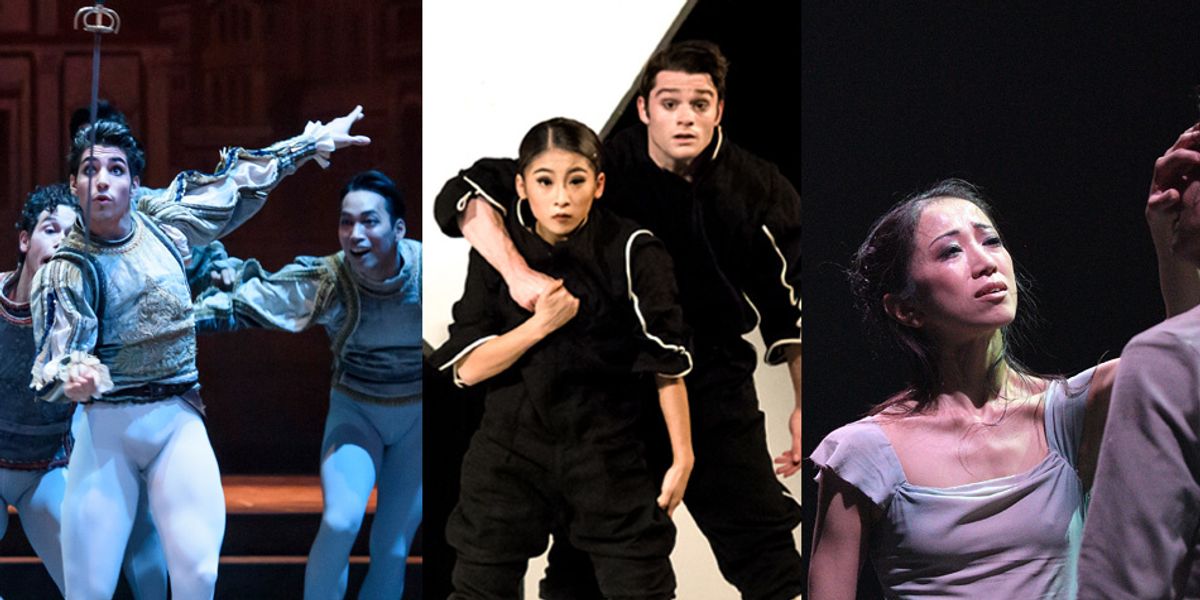Put Your Best Face Forward: Our Top Tips for Onstage Facial Expressions
A dancer’s face can be a powerful tool to convey personality, emotion or character, and it’s often the first thing noticed by the audience. Yet dancers sometimes forget about it entirely because they are so focused on the rest of the body. Making better use of your face can add nuance to your roles, and help you forge a deeper connection to the audience.
Do: Acknowledge that different styles call for different approaches.
“Limón is very natural. It’s all about breath, and having an open face,” says Julia Gleich, faculty member at Trinity Laban in London. “Graham is much more about longing and urgency. It’s a more narrow focus, like there are laser beams coming out of the eyes.” Dancers can practice expressing different movement qualities with the face as well as the body. “A perfect example is something that’s strongly percussive, like a tango,” says Gleich. “How can you reflect that dramatic, powerful, explosive quality in the face?”
Do: Take acting classes.
Whether or not you’re doing character work, they can help you gain better control over your facial expressions and make choices about what to do with your face. Don’t let your face be blank, unless it’s a choreographic choice. “Sometimes in contemporary dance it looks like the body is moving, but the face doesn’t know it,” says Gleich. Remember that you are still yourself while in the studio. “You don’t have to check your whole life at the door,” she says.
Don’t: Go overboard.
For example, while hip hop requires a different type of facial expression than ballet or modern, says Steven Vilsaint, a hip-hop teacher at Accent Dance NYC, it should still be nuanced. Over-the-top faces don’t always communicate a feeling or narrative to an audience. “Dance is a language,” he says. “Make sure you’re telling the story you want to tell.”
Do: Look where you’re going in traveling steps
Practice following your hands with your eyes starting at the beginning of class. Do use the mirror strategically to hone specific facial expressions. “Think about what you want to reflect,” says Vilsaint. “What kind of person do you want to bring to the audience? What do you want them to think as they’re looking at you?”
Don’t: Neglect your eyes.
Looking at the floor or the mirror unnecessarily is among the most common mistakes dancers make in class, says Elisa Toro Franky, program director at Accent Dance NYC. Your eyes can communicate mood and intent.
Do: Look at your fellow performers.
This facilitates more natural and animated facial expressions.
Do: Relax your lips.
“People keep their lips closed, and seal off the energy in the face,” says Gleich. “When I try to get them to open their lips, students often start laughing.” If you’re struggling with this, try talking to your fellow dancers as you move in rehearsal or class—with the permission of the teacher or choreographer. “Having a conversation, even if it’s just about breakfast, will help make your face more available,” says Gleich.
Do: Use video
Spot any habits you might not be aware of, like frowning or making awkward expressions.
Don’t: Plaster a smile on your face.
If you are supposed to be expressing joy, channel genuine feeling. “Think of a time in your life that you’ve felt happy and let your face reflect that,” says Franky.




